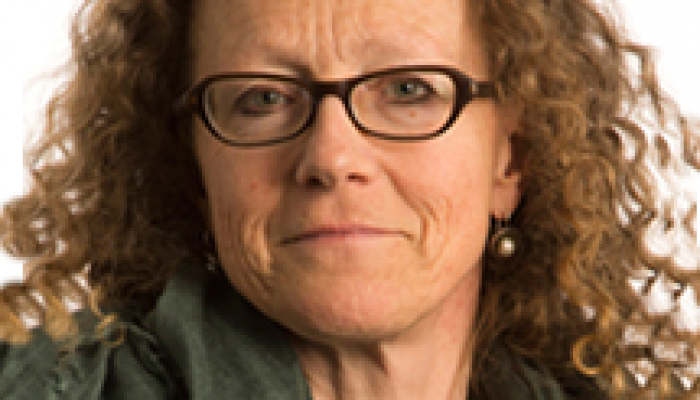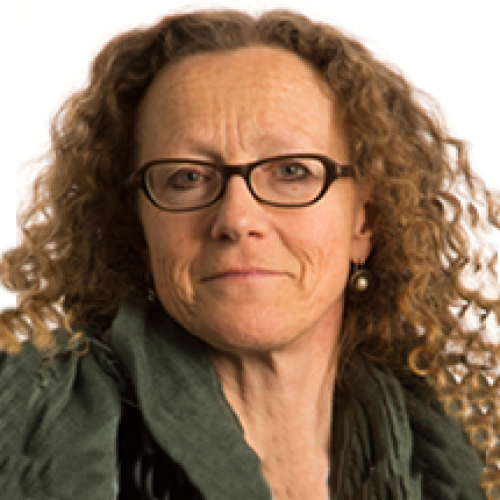Presidential Message

This year, finally we will have a real, ‘physical’ ESC conference!! If things stay as they are, we will not have to wear face-masks, we can sit together, we will flock from meeting room to meeting room. We will be able to have a beer, wine or other drink in the sultry Andalusian evenings, with friends, colleagues that we haven’t seen for much too long. The fact that this year we do not look at a two-dimensional screens and talk into cyberspace, but see each other three-dimensionally is by itself cause for joy.
What is more: the ESC Board has in the past months visited the premises of the 2022 conference, and discussed all preparations with the local organizing committee. This year’s conference indeed promises to be a smasher! We have never had this many registrations. After the opening ceremony, we will meet in the Botanical Gardens. The conference halls are spacious, modern and centrally located. Our conference dinner is at one of the most beautiful locations along the sea shore. And all this against the backdrop of that Andalusia, with the AlHambra, Cordoba and Sevilla and much more to see. Malaga 2022 all in all promises to be a spectacular and festive get together.
But there is a dark shadow hanging over this conference, as we will be having all this fun while a war is raging elsewhere in Europe. The images that we see almost daily in the news are often beyond our imagination. Thousands have been killed, many more wounded, millions left their homes and much of Ukraine has been destroyed beyond recognition. The devastation and suffering are indescribable. In Ukraine, international and war crimes have been and are apparently being committed, forensic investigations are being carried out on the ground as much as practically possible.
How and when the war will end, how soon Ukrainians will be able to re-assume their livelihoods, how victims will fare, whether perpetrators will be prosecuted and whether justice will be done – we do not know. What is certain is that this war will leave massive wounds, due to the attacks and devastation in Ukraine itself, but also from the war’s indirect (global) impact.
Research has indeed shown that the impact of conflicts in which such atrocity crimes are committed are vast, pervasive, and indeed long-lasting. While news items generally inform us about victims of so-called ‘direct violence’ who die at the hands of perpetrators or from attacks with weapons, studies have shown that the number of ‘indirect victims’ is often a multitude of these. War destroys also vital infrastructure and disrupts life: hospitals are destroyed, people who need medical attention cannot be transported to receive aid, medicines run out, people weaken from hunger and exhaustion. And mortality is therefore generally increased much above peace time levels, to a significant extent, from such indirect consequences of war. Assessing victimization from conflicts is no easy task, and it may take quite a long time before the exact scale can be determined relatively confidently (see for an example Tabeau and Bijak, 2005, on the war in the former Yugoslavia).
Apart from mortality, wars and conflicts also leave many citizens affected physically and mentally, often for life (see for an overview of the impact of wars and atrocity crimes Bijleveld, 2019, chapters 13 and 16). The consequences can be even more pervasive. Research has shown that the Rwandan genocide, that lasted for 100 days, dented an entire generation’s schooling levels, with children of school-going age during the genocide having received about a year less schooling than comparable children before the genocide (Akresh and De Walque, 2008). Research on schooling levels in Zimbabwe showed that such impacts can be unevenly distributed with especially children from poorer families affected by war (UNESCO, 2010). Marriage patterns in the French countryside changed after World War I (Abramitzky, Delavande and Vasconcelos, 2010): in regions with higher male mortality women’s chances in the marriage market worsened and those of men improved. The proportion of men who married in those regions increased, and they married women of higher social class than their own. Women in such regions were less likely to marry and married at later ages than women from regions with lower male mortality.
What is more: war affects not only those who witnessed it, but also impacts future generations. Research showed how exposure to hunger during the Dutch so-called ‘Hunger Winter’ (the period from winter and spring of 1944 where after a railway strike, the Nazi German occupiers limited rations such that people in the west of the Netherlands received as little as 400 – 800 calories per day) impacted as yet unborn children. Pregnant women exposed to the famine during mid- to late gestation had babies with significantly reduced birth weights. Babies whose mothers were exposed only during early gestation had normal birth weights; however, they grew up to have higher rates of obesity than those born before and after the war and higher rates than those exposed during mid- to late gestation, with the weight difference on average almost 5 kgs. At ages 56 to 59, men as well as women exposed to famine during the early stage of gestation also performed worse on a selective attention task (De Rooij, Wouters, Yonke et al., 2010).
While Europe has been relatively peaceful since World War II, wars have been fought in Europe, however, and Ukraine is not the first time we have seen atrocity crimes committed on European soil. One need only think back to the wars in the former Yugoslavia and genocide in Bosnia in the early 1990’s, for instance, legacies of which still linger in the region and beyond. While criminology only recently embraced atrocity crimes as part and parcel of criminology, a wealth of important and relevant research has already been conducted. The freshly published Oxford Handbook on Atrocity Crimes (Hola, Brehm & Weerdesteijn, 2022) testifies to that.
As criminologists we need to contribute to unraveling and understanding such ‘unimaginable’ violence committed around the world as we speak. We need to study the extent and impact of victimization, we need to study the perpetrators of such violence, and how criminal justice systems and other institutions or mechanisms can contribute to justice for victims and the restoration of affected societies.
The ESC Board with the local organizing committee has made additional room to pay attention to research on atrocity crimes, in paper panels and during the plenary addresses. We encourage you all to partake in these sessions and discussions. The atrocities committed during this war, and beyond, concern us as Europeans, and as criminologists in particular. They should be a priority on our research agenda.
Abramitzky, R., Delavande, A., & Vasconcelos, L. (2010). Marrying up: The role of sex ratio in assortative matching (Tech. Rep. No. 36). MI- CROCON. Retrieved from www2.econ.iastate.edu/classes/econ321/ Orazem/Abramitzky marriage france wwII.pdf
Bijleveld, C.C.J.H. (2019). Conflicts and International Crimes. An Introduction to Research Methods. The Hague: Eleven.
De Rooij, S. R., Wouters, H., Yonker, J. E., Painter, R., & Roseboom, T. J. (2010). Prenatal undernutrition and cognitive function in late adulthood. Proceedings of the National Academy of Sciences, 107, 16881–16886. doi: 10.1073/pnas.1009459107
Tabeau, E., & Bijak, J. (2005). War-related deaths in the 1992-1995 armed conflicts in Bosnia and Herzegovina: A critique of previous estimates and recent results. European Journal of Population, 21, 187–215. Retrieved from link.springer.com/ article/10.1007\%2Fs10680-005-6852-5
UNESCO Institute for Statistics (2010). Think piece commissioned for the EFA Global Monitoring Report 2011, The hidden crisis: Armed conflict and educa- tion (Tech. Rep. No. 2011/ED/EFA/MRT/PI/50). UNESCO. Retrieved from www.protectingeducation.org/sites/default/files/documents/ unesco - the quantitative impact of conflict on education. pdf
